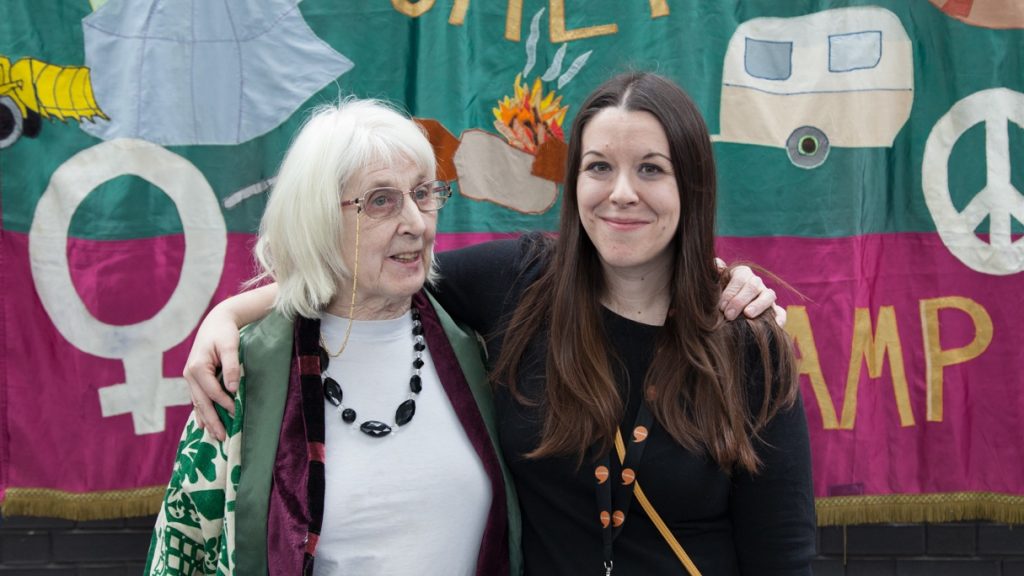Inside St Fagans
25 September 2019
Following St Fagans Museum’s recent success in the 2019 Museum of the Year competition, we asked one of the principal curators about the reason for the success and the Museum’s links with Cardiff University.
At the beginning of July, St Fagans National History Museum won the Art Fund Museum of the Year prize, beating four other competitors from the United Kingdom, including V&A Dundee and HMS Belfast.
The open-air Museum opened to the public in 1948 and now includes over 40 exhibitions showing the development of Wales’ history and culture, from prehistoric times up to the present day, including: round houses from the Iron Age, a Court of the Princes of Wales from the 12th century, Oakdale Workmen’s Institute and St Fagans Castle itself.
The principal curator for modern and community history, and an alumna of Cardiff University, Elen Phillips (MA 2005), described the award as the ‘highlight’ of the year
The principal curator for modern and community history, and an alumna of Cardiff University, Elen Phillips (MA 2005), described the award as the ‘highlight’ of the year, especially after the museum completed the ‘Making History’ redevelopment in 2018, worth £30 million, that transformed the visitor experience by opening new galleries and workshops.
According to the competition’s judges, this proved that the Museum has showed ‘exceptional imagination’ and achieved great results over the past year.
Ms. Phillips noted that contributions from a large number of people led to the success, as well as the Museum’s emphasis on co-creating history with the people of Wales:
‘The award belongs to the thousands of individuals, volunteers and communities that have contributed their stories and labour to the Museum over the years.’
Cardiff University is one of the many organisations that have adopted a close relationship with the museum over recent years. They have collaborated many times, including on the Traces project in 2017 to develop a storytelling app for the Museum.
They have also worked together on educational projects for young people, such as Shape My Street, the Welsh School of Architecture’s national design competition.
The competition, which will be holding its prize winners’ day at the Museum, encourages primary school children to connect with their communities by designing new neighbourhoods, integrating science and technology education with creative design exercises.
In addition to this, the University and the National Museum Wales signed an agreement of understanding in 2015, with the aim of working in research areas shared by both organisations. Indeed, this ‘participatory ethos’ that Sain Ffagan has adopted ‘has been responsible for our success in the competition’, according to Ms Phillips.
She also noted the educational link between Cardiff University and St Fagans which has been of personal importance to her:
‘I competed my MA degree in Folk Studies at Cardiff University between 2004-05. At the time, this degree was offered in collaboration with St Fagans and a large proportion of the teaching took place at the Museum.
As a result, some of the lecturers are now close colleagues of mine. I look back at my time at Cardiff University with fond memories. I was in my mid-twenties at the time, and had spent many years in the world of work before returning to the lecture theatre. I think that that break from education was good for me and has had a positive impact on my time at Cardiff.’
The relationship that the University and the communities of Cardiff have with the Museum has been very fruitful. The museum’s future is looking very bright and reflects the strength and wealth of Cardiff’s and Wales’ culture alike.
- July 2024
- June 2024
- May 2024
- April 2024
- March 2024
- February 2024
- January 2024
- December 2023
- November 2023
- October 2023
- September 2023
- August 2023
- July 2023
- June 2023
- May 2023
- April 2023
- March 2023
- February 2023
- January 2023
- November 2022
- October 2022
- September 2022
- August 2022
- July 2022
- June 2022
- May 2022
- April 2022
- March 2022
- February 2022
- January 2022
- December 2021
- November 2021
- October 2021
- September 2021
- August 2021
- July 2021
- June 2021
- May 2021
- April 2021
- March 2021
- February 2021
- January 2021
- December 2020
- November 2020
- October 2020
- September 2020
- August 2020
- July 2020
- June 2020
- May 2020
- April 2020
- March 2020
- January 2020
- December 2019
- November 2019
- October 2019
- September 2019
- August 2019
- July 2019
- May 2019
- April 2019
- March 2019
- February 2019
- January 2019
- December 2018
- November 2018
- October 2018
- September 2018
- August 2018
- July 2018
- June 2018
- May 2018
- April 2018
- March 2018
- February 2018
- December 2017
- November 2017
- October 2017
- September 2017
- August 2017
- July 2017
- June 2017
- May 2017
- April 2017
- March 2017
- February 2017
- January 2017
- November 2016
- October 2016
- September 2016
- July 2016
- June 2016
- May 2016
- April 2016
- March 2016
- February 2016
- January 2016
- December 2015
- November 2015
- October 2015
- September 2015
- August 2015
- January 2015
- December 2014
- November 2014
- September 2014
- August 2014
- May 2014